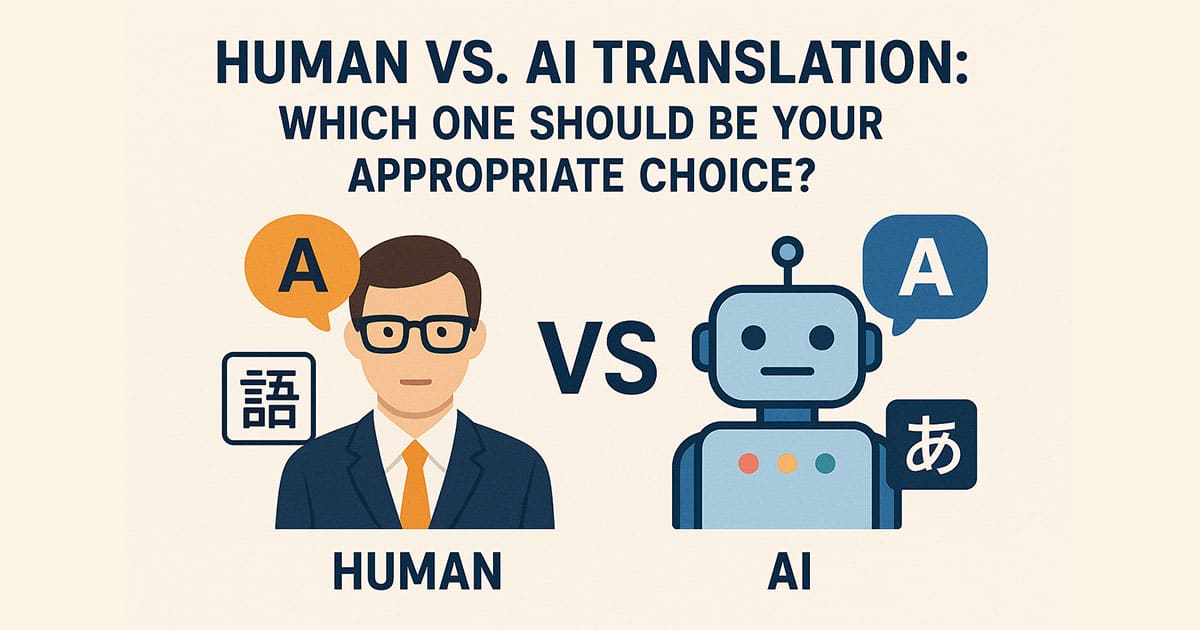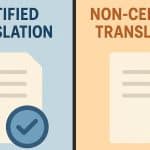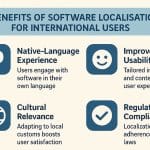The history of Translation is more than 2000 years old. It has acted as a tool for the transfer of knowledge from one community to another in the most sophisticated way. The method and style of translation has been a subject of knowledge since its beginning, however, the revolutionary shift in translation came in the 21st century after the advent of machine learning in information sciences. While human translation is performed at the individual capacity of a translator, machine learning employs a technology that uses advanced algorithms to automatically convert text or speech from one language to another. The most advanced version of machine learning is artificial intelligence (AI). AI has been developed to store large language learning modules (LLMs) in its dataset. This helps the user to use AI services for translation almost like a mobile application. To make a decision on which translation is appropriate for your needs, a thorough difference between human and machine translation is required to assess their advantages and limitations. Let us understand them briefly.
There are six (6) important parameters that need to be taken into consideration while choosing between human and AI translation. Once a counterbalance and a preference cross referencing is assessed, an appropriate choice can be made regarding which translation service to be used.
- Quality– The LLMs used in AI translation offers a high of accuracy but negligible errors. However, AI translation is not yet a perfect, 100% fail-proof solution. It still requires human proofreading for avoiding any inaccuracy when it comes to contextual and specific meanings. On the other hand, human translation is a much more reliable method of translation that are often done by their domain experts to maintain high level quality and context specification
- Quantity– when dealing with a large volume of source document for translation, AI translation is much more efficient and precise. The high volume of source document may affect the translator’s consistency and accuracy. However, the domain expertise and experienced translators can overcome this challenge as well.
- Time-management– whether the source document for translation is large or small, AI takes significantly less time than a human translator. It is always suggested to go for AI translation when there is a time constraint. However, a final proofreading may enhance the quality of translation in a time-bound scenario. It has been established that AI takes five times less time to translate a document for translation, including its proofreading time by a human translator.
- Context-specific translation– while a translation work is undertaken, it is essential to under stand the nature of the document and the intent behind its translation. Documents that involve abstract language, such as humour, sarcasm, or cultural-specific idioms, figure of speech, homophones etc are often challenging for AI translation modules. On the other hand, it is highly suggested to utilise human translation in such scenarios.
- Subjectivity– while AI translation modules are consistent in their output irrespective of their domain, the human translation is bound to have subjectivity. This means that human translation is different from one individual to another, depending upon their expertise, experience and personal level of efficiency. Therefore, subjectivity comes with human translation.
- Field of translation– There are certain fields which have a significant database when it comes to LLMs, therefore, AI has proved to be more accurate in translation in any given scenario. Fields such as IT, finance, legal and engineering are much appropriate for AI software to translate while other fields such as marketing, medical, literary work and official documents are more context specific and thus require human translation to maintain a high quality of translation.
After a thorough assessment of all six parameters, the suitable option can be chosen for translation that prioritises one’s own specific requirement. However, it is an accepted norm to use both the AI and Human translation in a combined manner so that best results can be achieved. After an AI translation, the expertise of a professional human translator is still needed to verify its output and deliver that much-needed human touch. The combination of both for accuracy and timely submission, consistency and cost efficiency is the best solution.







